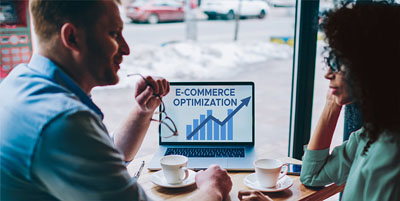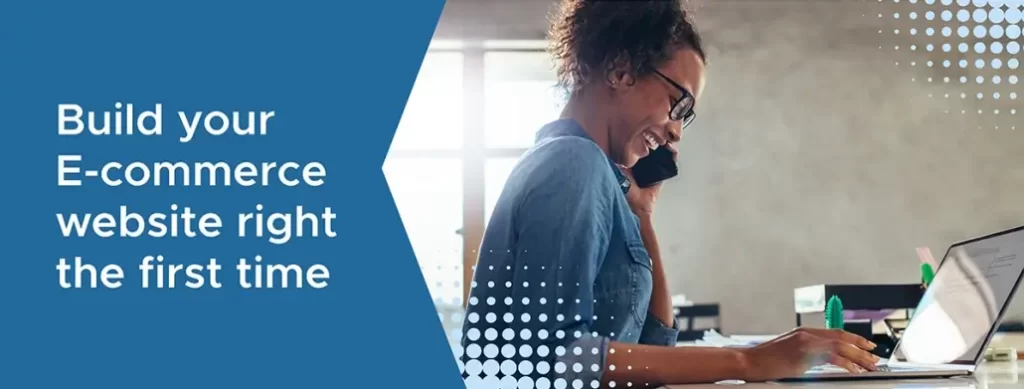Don’t get swept up in the rush; build your E-commerce website right the first time.
Let’s face it, 2020 has certainly presented us with some unique challenges, forcing many businesses to pivot their focus onto E-commerce initiatives. Schools and training organisations are now conducting lessons online. Restaurants are selling their menus as take-home meals and offering contactless delivery. Even professional service providers, such as accountants, Doctors, and Lawyers, have had to find ways to make appointments available via Telephone and Video link.
As everyone scrambles to get their online offering sorted most quickly and cheaply possible, many are blind to the fact that a compromised website will not only perform poorly, but it may even completely turn new prospects off from doing business with you at all, in the future.
Pivot with Purpose!
Your website is your virtual home – think of it as a digital version of a bricks-and-mortar store. Just like in a real store, your customers’ first impressions can easily make or break the deal.
If you were setting up a retail space, you wouldn’t just slap any old fixtures, fittings, and products into your store – you’d want to make sure everything is on-brand, fit for purpose, and connects with your customers in the right way and with the right message. The same principle applies to your website.
You have probably worked extremely hard to build your brand and business to where it is today. Don’t jeopardize your efforts now by jumping at the first option that comes along, promising you the quickest and cheapest solution available.
For example, you’re probably familiar with Zoom video conferencing by now and might even consider it an easy, low-cost solution for your client consulting calls. But, did you know that absolutely anyone can dial in to your private Zoom calls if they know how? Not a great solution if you’re trying to protect or retain client confidentiality; some food for thought.
While the current situation requires us to approach things a little differently, at its core, it’s essential that your offering remains on-brand and fit-for-purpose. Suppose you’re not quite sure where to begin or are feeling overwhelmed. In that case, it might be worth engaging a professional, experienced team that can assess, plan, implement, market, and fully maintain your E-commerce site.


Where to begin…
While of course, every business and industry is different, there are a handful of things you can do today to get you set on the right track. These include:
Review Your Strategy
Aspects such as your Business Model, customer lifecycle mapping, and long-term goals may require reconsideration. Have your strengths, weaknesses, opportunities, and threats shifted? Is your current business model still sustainable? Are your goals realistic? Have your customers’ needs, aspirations, or preferences changed? These are just a few of the questions you should ask yourself before making any major changes.Leverage Social Media
Even though you have Social Media pages for your business, are you fully utilising them? Direct Messaging, shoppable product listings, and live-streaming to your audience. These are just a few of the capabilities you can perform right now, directly from your Facebook or Instagram page. This helps you maintain consistent communication channels with existing customers and contacts. If you’re selling to businesses, LinkedIn also offers some valuable features worth exploring.Use Video to connect with your Customers
We’ve already briefly touched on Zoom and the fact that, while it’s certainly a cost-effective solution, it’s also not the most secure one. For a more secure video chat experience, consider platforms like Signal or Wire, which feature end-to-end encryption, making them some of the most secure solutions available. If you have a devoted social media following then Facebook Live and Instagram Live will allow you to reach them with ease, whether its to answer live questions from your audience, teach classes, give your audience a look ‘behind the scenes’ or simply doing a daily check-in so they know you’re still there.Selecting Your E-commerce Platform
While Social Media is an easy way to immediately increase your online presence, these platforms have their own set of rules, limitations, and best practices. Your website, however, is your virtual home, where you have complete control of what goes on there and when. If it’s a simple E-commerce solution you’re after, dedicated solutions like Shopify, Magento, and WooCommerce can easily be added to existing websites, allowing you to launch an online store quickly. Each E-commerce platform has its features and benefits, so be sure to do some research to ensure the solution you select is fit for purpose.Utilise Other Relevant 3rd Party Platforms and Apps
Recently, we’ve seen that Google is now accepting free organic listings to the Google Shopping tab for the first time in 8 years (yes – quick, go!), which is a fantastic opportunity for businesses with physical products to sell. Depending on the nature of your business, numerous third-party platforms and apps can help you easily pivot your offering. If you’re in the food business, then getting onto platforms like Deliveroo or Uber Eats will allow you to offer home delivery with minimal effort or disruption. If you’re in the health and fitness sector, a platform like Udemy or Inspire360 will enable you to deliver branded online courses, workshops, and certifications.Integrate Marketing Automation Software
Marketing automation solutions can deliver big results with minimal effort. Think improved productivity, targeted engagement, and clear insight into what is and isn’t working. This allows you to fully leverage the customer and order data you’ve collected for growth and future offer personalisation. According to eMarketer, 86% of marketers said marketing automation improved nurturing, 73% said it provided measurable results, and 66% said it enhanced targeting and personalization. If the recent economic challenges have forced you to cut back your staffing budget, then good automation software like Infusionsoft, HubSpot, or Marketo should be an absolute no-brainer.
You don’t have to go at it alone
As you focus on your customers’ current needs and build an online business strategy to deliver on the most pressing ones, it’s essential to remember that you don’t have to make this pivot alone. Take a page from the playbook of the restaurants behind the Providoor website to consider how you might collaborate with other local businesses and develop a win-win strategy that supports one another.
Or better still, let our team at VooDu Marketing be your expert E-commerce implementation partner, helping you to mature your e-commerce efforts and make the right moves during this critical economic season. We will not only help you prepare your business to handle both surges and drops in customer engagement, but we can also assist you in creating the best possible user experience.
So remember – Don’t get swept up in the rush, contact us at Voodu Marketing by completing the form below, and get your E-commerce website built right the first time.



